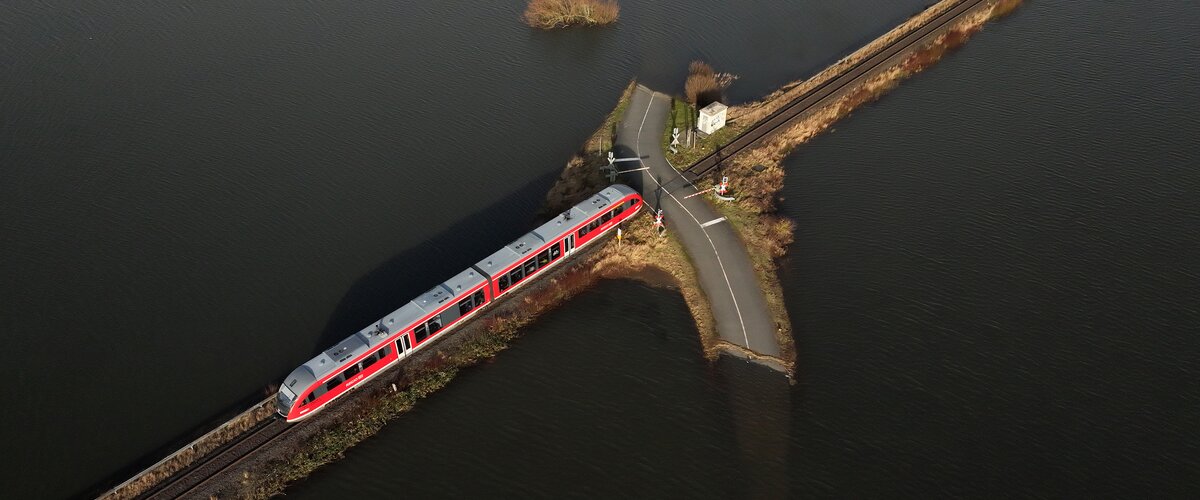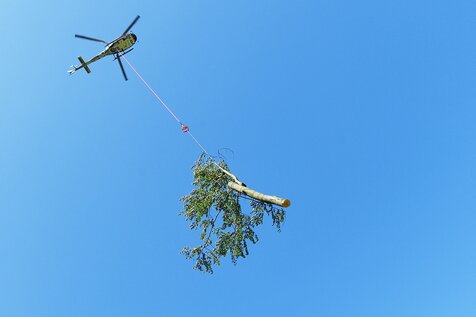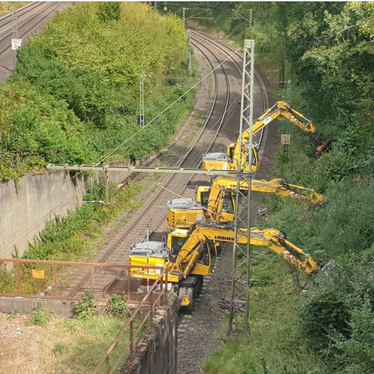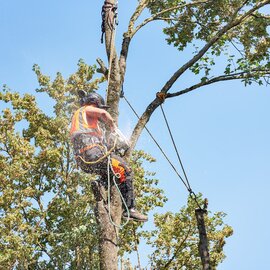As an operator of critical infrastructure and a large-scale organization, Deutsche Bahn is particularly affected by the current and future impacts of climate change. That is why DB is preparing intensively for increasing extreme weather events and is further developing its climate resilience management both strategically and operationally.
By acting with foresight and proactivity, DB is not only complying with regulatory and legal requirements. With group-wide and cross-business resilience management, DB is also focusing on safer infrastructure, more resilient buildings, more reliable vehicles, and protecting its customers and employees from the consequences of climate change.
Climate-Resilient Railway Technology Program
As part of its Climate-Resilient Railway Technology Program, Deutsche Bahn has conducted climate risk analyses for various DB facilities. These analyses form the basis for the development of targeted and effective adaptation measures to make vehicles, infrastructure, and buildings more technically resilient. Based on the analyses, pilot projects were launched for certain facilities and historical weather and incident data was evaluated in more detailed studies.
Adapting to climate change
DB InfraGO works with its own natural hazard management team to limit the consequences of extreme weather events as much as possible. Specifically, DB wants to reduce the risks posed by storms, extreme temperatures, and heavy rainfall.
To this end, DB InfraGO is also collaborating with partners – for example, on the “RailVitaliTree” research project, which is coordinated by the German Center for Rail Transport Research (DZSF). The aim of the project is to develop a vitality monitor that uses satellite data to show changes in trees in the vicinity of railway tracks. This should lead to a better understanding of factors that negatively affect the vitality of trees along railway tracks and enable the development of new measures to prevent broken branches and fallen trees during storms.
Adaptation to climate change is also becoming an increasingly important focus in new construction and expansion projects. DB has carried out climate proofing for selected large-scale projects, such as the Karlsruhe–Basel and Hamburg–Lübeck–Puttgarden lines. This involved analyzing risks such as heat waves and heavy rainfall and developing adaptation plans.
Increased safety at stations
DB InfraGO is also working on the development of climate-resilient station environments. The aim is to increase passenger comfort and safety and improve the resilience of stations to extreme weather events. In cooperation with local authorities, the aim is to create livable and climate-adapted public spaces.
In order to reduce the vulnerability of stations and train stops, concrete measures were tested in pilot projects, including climate-adapted planting and the use of permeable soils. This not only contributes to improving climate resilience, but also strengthens biodiversity.
Vegetation management
The safety of passengers is a top priority for Deutsche Bahn. Bushes and trees along the tracks are therefore removed to reduce the risk of broken branches and fallen trees, for example due to storms or heavy snowfall. DB pays strict attention to environmental protection and nature conservation so that birds and mammals are not disturbed during their breeding and nesting seasons.
The cuttings produced during vegetation management are returned to nature as valuable biomass. Usable wood is marketed as logs or wood chips. The remaining trunks and branches are deposited at a safe distance from the tracks, creating a valuable habitat and refuge for smaller animals.



